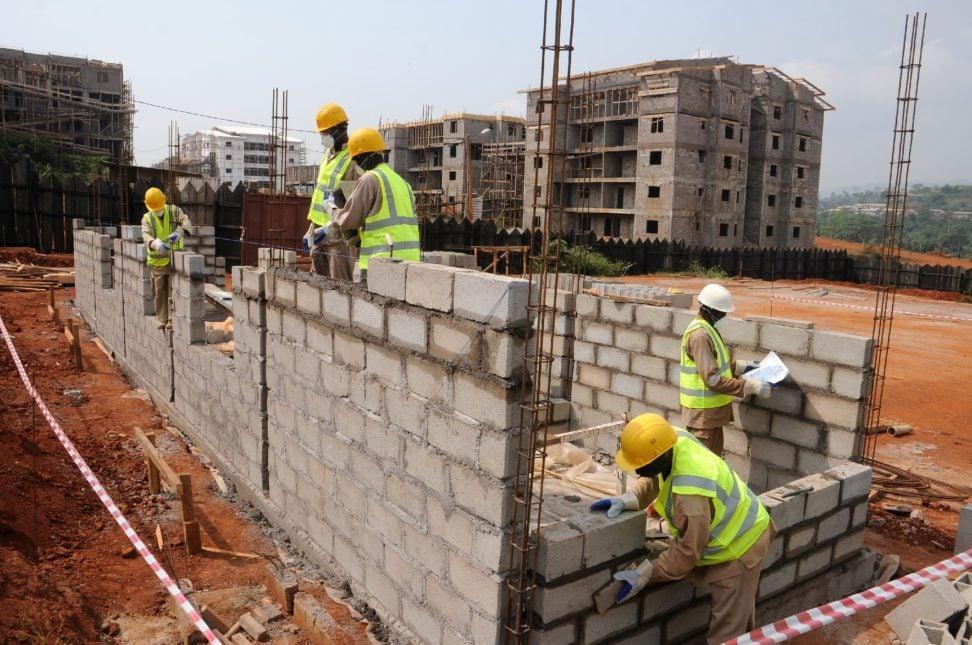Africa-Press – Uganda. Uganda’s construction sector recorded a slight rise in inflation, with the annual rate increasing to 0.6% in the 12 months ending April 2025, up from 0.5% in March, according to the latest Construction Input Price Index (CIPI) released by the Uganda Bureau of Statistics (UBOS).
The modest uptick reflects shifting cost dynamics across key segments of the sector, particularly specialised construction activities and civil engineering works.
Specialised activities posted an annual inflation rate of 0.3%, up from 0.2% the previous month.
Within this category, the cost of building completion and finishing rose to 0.8%, up from 0.7%, indicating increased demand or rising prices in the final phases of construction projects.
“While the overall increase in construction inflation remains low, the sector is experiencing notable changes in specific input costs and sub-categories,” said Irene Namugenze Musitwa, a senior statistician at UBOS.
“This trend signals the importance of tracking inflation not just at an aggregate level but also across specialised activities that often drive total construction costs.”
She made the remarks during a media briefing at the UBOS offices in Kampala on 30 May 2025.
Civil engineering works also contributed to the rise in inflation, with the annual rate for the category doubling from 0.3% in March to 0.6% in April.
This increase was largely attributed to road and railway construction costs, which also registered 0.6% inflation.
Building construction costs, meanwhile, rose slightly to 1.0%, up from 0.9%, with both residential and non-residential buildings showing equal contributions to the change.
On a monthly basis, construction input prices remained stable at 0.2%, unchanged from March.
This consistency was supported by a continued 0.2% increase in the building construction input index, indicating a steady rise in short-term costs.
The report pointed to mixed price trends across construction materials, underlining the fluid nature of the input market.
Among materials that saw price increases, sand prices rose by 0.8% in April, compared to just 0.1% the previous month—possibly due to higher transport or extraction costs.
Prices for aggregate, hardcore, and crushed stone increased by 0.4%, reversing a 0.1% decline seen in March.
____________________________________________
Price Increases:
Sand prices rose by 0.8% in April, up from just 0.1% in March, likely due to higher transportation or extraction costs
Aggregate, hardcore, and crushed stone prices climbed 0.4%, reversing a 0.1% decline seen in the previous month
High tensile steel bars rebounded with a 0.2% rise after dropping 0.5% in March, reflecting a partial recovery in global steel prices or local demand increases
Price Declines:
Lime prices fell by 0.5%, in contrast to a 1.3% increase in March
Eucalyptus props, commonly used in scaffolding, declined by 1.1%, reversing the 1.3% rise from the previous month.
_____________________________________________
High tensile steel bars, which had dropped by 0.5% in March, rebounded with a 0.2% rise in April, reflecting partial recovery in global steel prices or a rise in domestic demand.
Conversely, some materials saw price declines. Lime prices dropped by 0.5% in April, following a 1.3% increase in March.
Eucalyptus props, commonly used in scaffolding, also fell by 1.1%, reversing a 1.3% increase recorded the previous month.
“This back-and-forth in material prices mirrors broader trends in construction inputs, some of which are tied to seasonal demand, fuel prices, and global supply chain dynamics,” Musitwa noted.
Looking ahead, analysts suggest that while construction inflation remains relatively controlled, close monitoring of input costs—especially for materials like steel, sand, and aggregate—will be critical.
These materials are essential to both public infrastructure projects and private developments, and are highly sensitive to fluctuations in fuel prices, exchange rates, and international commodity markets.
The construction input data offers valuable insight for contractors, developers, and policymakers as they plan budgets and adjust project timelines.
With Uganda continuing to prioritise infrastructure investment and urban growth, sustained shifts in material prices could carry broader implications for the economy.
For More News And Analysis About Uganda Follow Africa-Press






